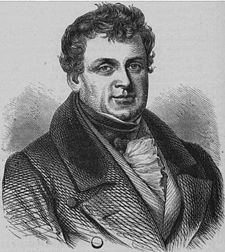 |
| The Royal Irish Constabulary before they destroy a home a few years after The Tithe War |
James Hoy left County Louth for America in 1830, just as the Tithe War was beginning. His Naturalization Papers indicate that he was bound for Phillipsburg, New Jersey, which is just across the Delaware River from Easton, Pennsylvania, but he stopped in Newark NJ for 15 years first. His believed home was a tiny townland called Newragh which had only 3 families living there in 1800. The next date when we know of habitation was 1850 when 3 other families lived there and one of which still lives there. We must think that James was forced to emigrate because his family lost their home due to the War.
The Tithe War in Ireland lasted from 1831 to 1836 and refers to a series of periodic skirmishes and violent incidents connected to resistance to the obligation of Catholics in Ireland to pay tithes for the upkeep of the Church of Ireland which was the Protestant denomination supported by the English Government.
Background
The payment of tithes was an obligation on those working the land to pay an annual tithe of 10% of the value of certain types of agricultural produce for the upkeep of the church. On the introduction of the Penal Laws from the 1600s, these payments went to the Anglican Church of Ireland, despite the fact that the vast majority of the population were Roman Catholic. Despite Daniel O’Connell’s achievement of having most remaining Penal Laws repealed in 1829, the obligation to pay tithes remained. His work was known as ‘Catholic Emancipation’. More often than not, tithes were collected in the form of goods, especially livestock, as opposed to payment of monies, as little cash was available in the countryside.
But the Composition Act of 1823 made it impossible to pay them in kind anymore instead of money. From the time of the Composition Act tithes were supposed to be paid in cash, and Tithe surveys were carried out in each Parish to assess what the income for that parish would be. Two people were appointed by each parish to carry out this assessment.
 |
| After the RIC destroyed a home |
There had been a campaign of largely peaceful resistance to collection since 1829 and it soon had a financial effect on the Anglican Clergy, who began in 1831 to record lists of defaulters. These lists of ‘Tithe Defaulters’ identified almost 30,000 individuals. The lists were passed on to the Irish Constabulary, which had been established in 1822 to take over the functions of the militia.
'The Irish Constabulary'
This massacre caused people to organize their resistance with agreed signals such as warning the community of the approach of police by the ringing of chapel bells. Such a warning resulted on 14 December 1831 in an ambush of a detachment of 40 police at Carrickshock in County Kilkenny; they were routed by the forewarned inhabitants and had 19 of their number killed, including their Chief Constable.
 |
| Daniel O’Connell was known as 'The Liberator' for ending most of the 'Penal Laws' against Catholics |
The British Government poured troops into the country, fearing a repeat of the 1798 uprising. The war came to a head in 1835 with the Rathcormac massacre, County Cork, when military and police killed 17 and wounded some 30 more in an attempt to collect a tithe of 40 shillings from a widow.
Outcome